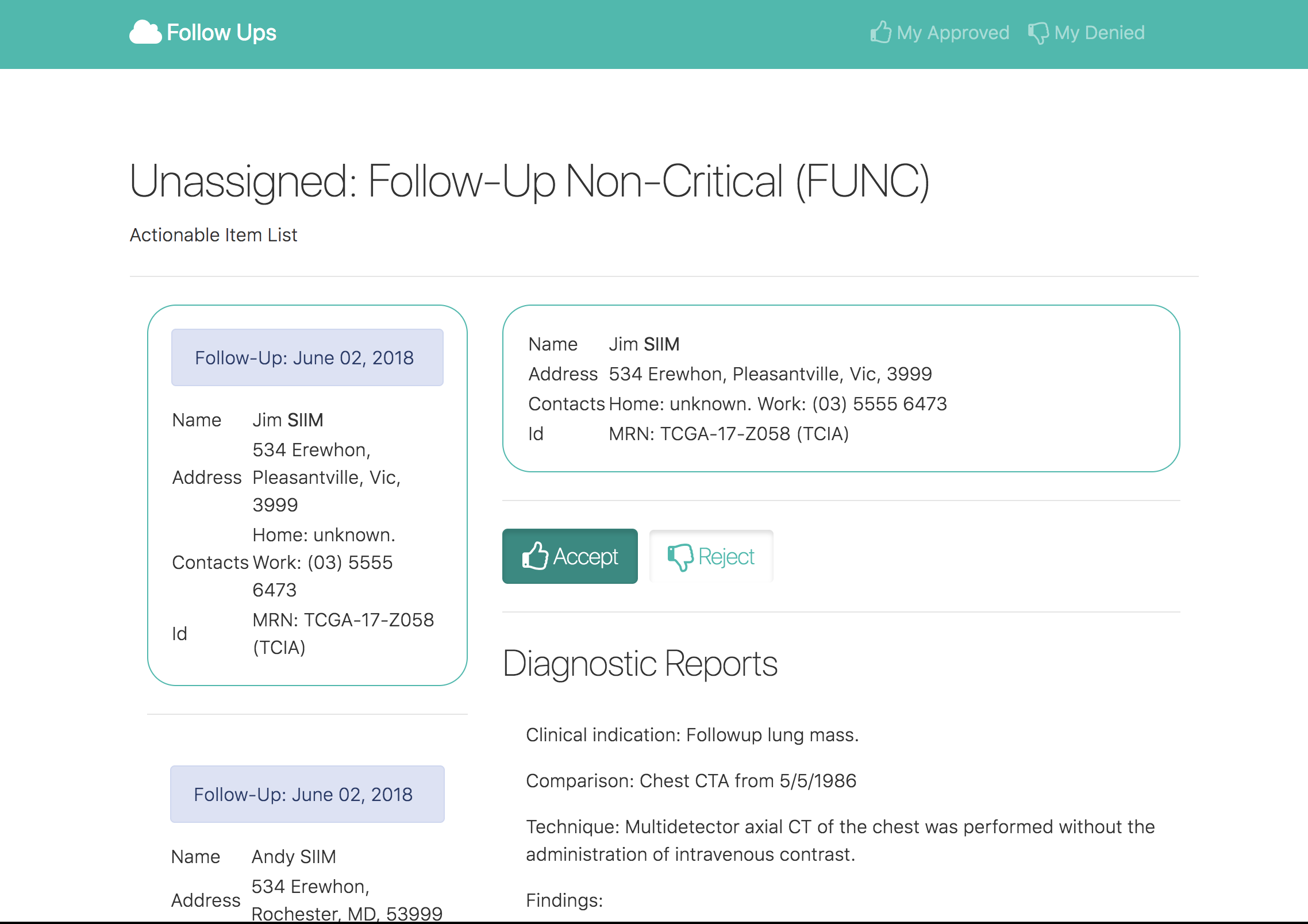SIIM Hackathon Project
For this years SIIM Hackathon, my team seeks to answer the question “How do healthcare organizations reliably communicate patient data?”. My teams answer to this question is through the use of FHIR (Fast Healthcare Interoperability Resources) so healthcare systems can bridge the communication gap.
An Ongoing Challenge
In today’s medical world, each medical organization has unique ways of tracking and storing patient data. Those differences are to be expected, however, that creates an issue when it comes to sharing data. To share data between two or more healthcare systems, you have to be able to validate the data in every way. If Marshfield Clinic has a different status codes for labeling their reports then UW Wisconsin, then their data is incompatible and could cause harm to the patient since the reports would undoubtably be misinterpreted.
dashboard created using data pulled from FHIR server

Why FHIR
In the IT Software world, FHIR is a way to standardize data so that there are a set of rules for how data is stored and labeled. If the healthcare organizations decide to follow the FHIR standard, then those systems would be able to communicate with one another.
As a software developer, having this type of data has huge potential. Developers can quickly create dashboards that allow the various healthcare providers to communicate more directly using interfaces, comment fields, patient history, schedules, and so on.
Conclusion
The entire hackathon experience taught me just how much potential there is by enforcing a few standards. I appreciate Teri Sippel Schmidt taking the initiative in teaching young engineers a solution to a problem that few know how to fix.